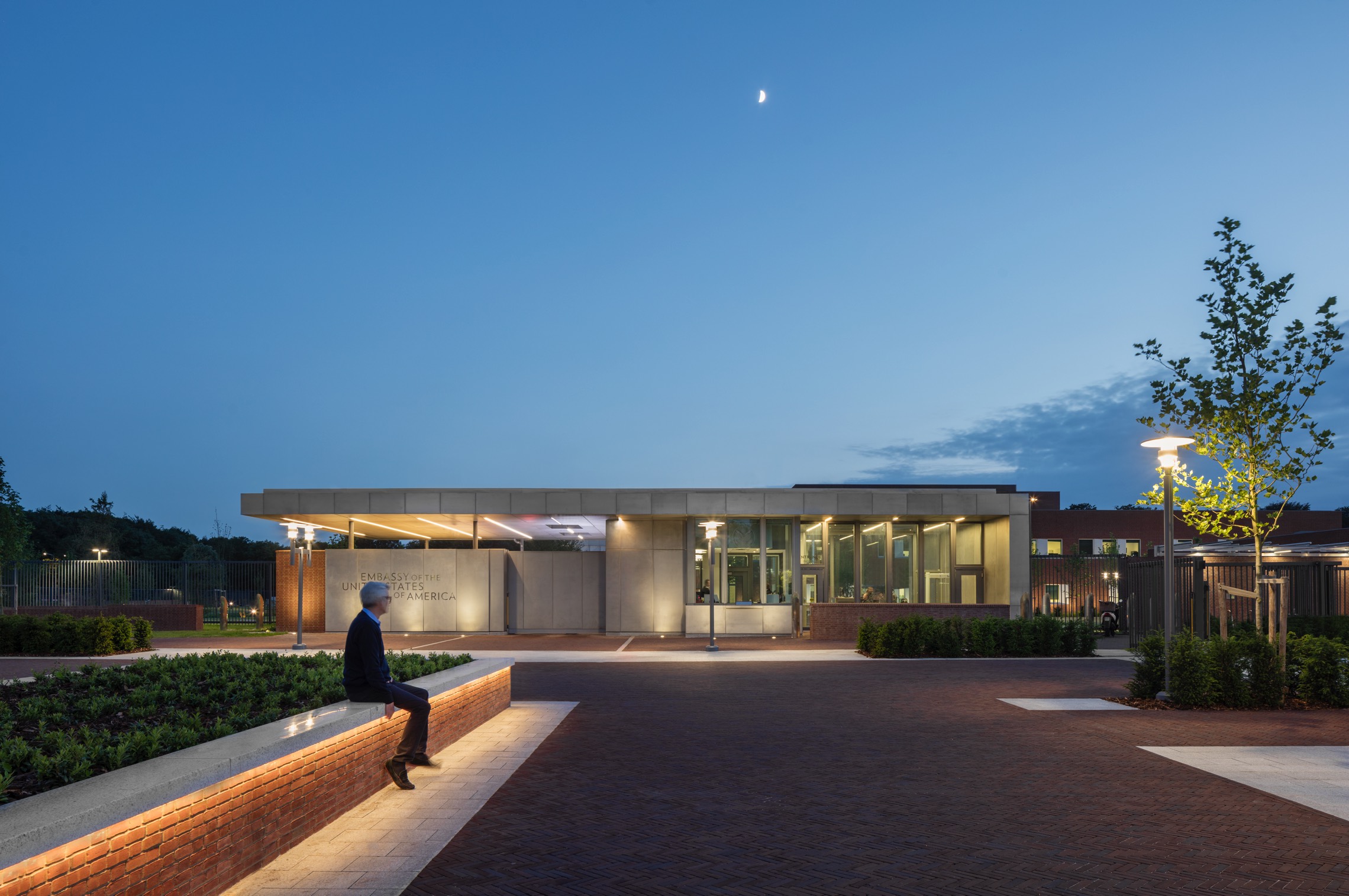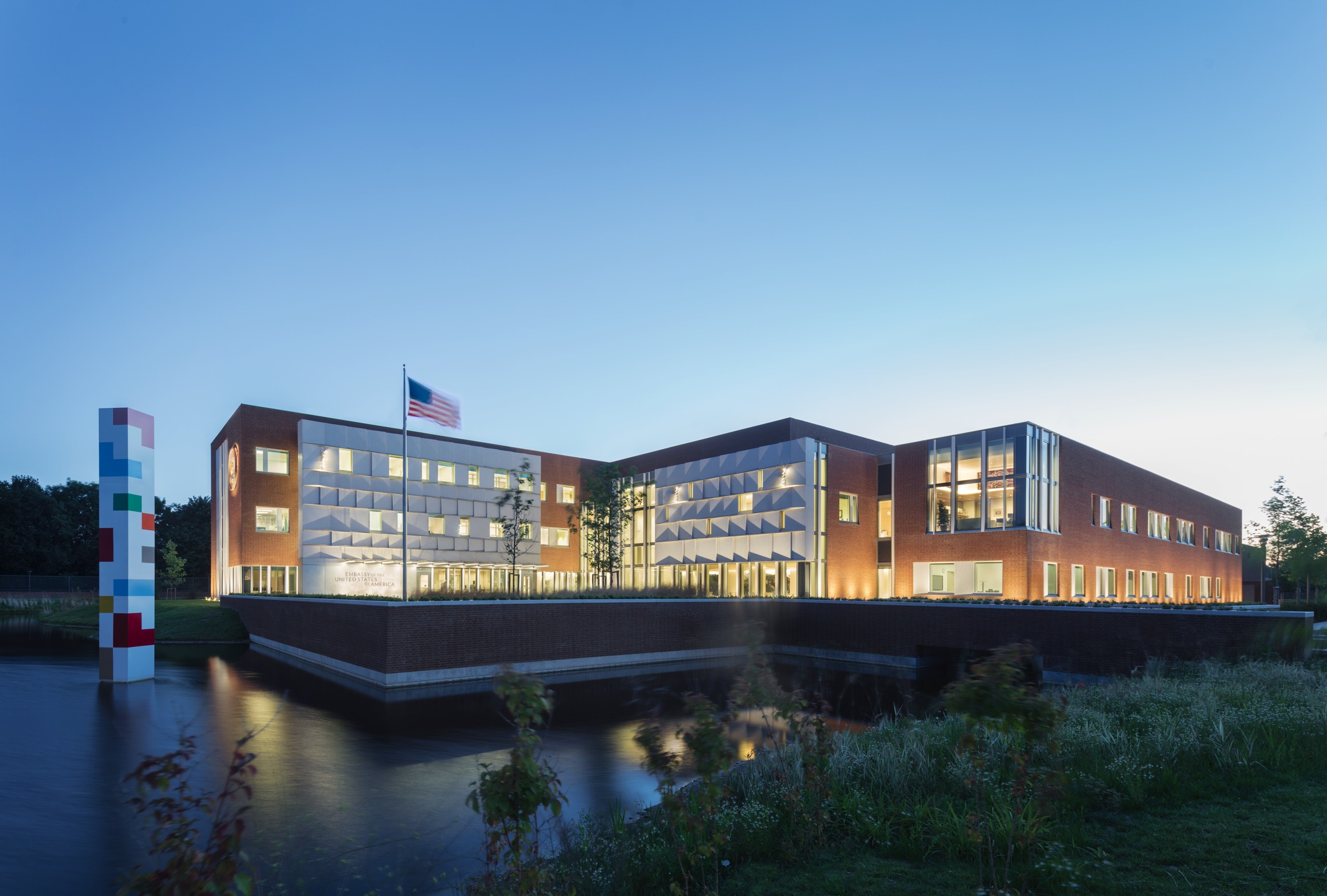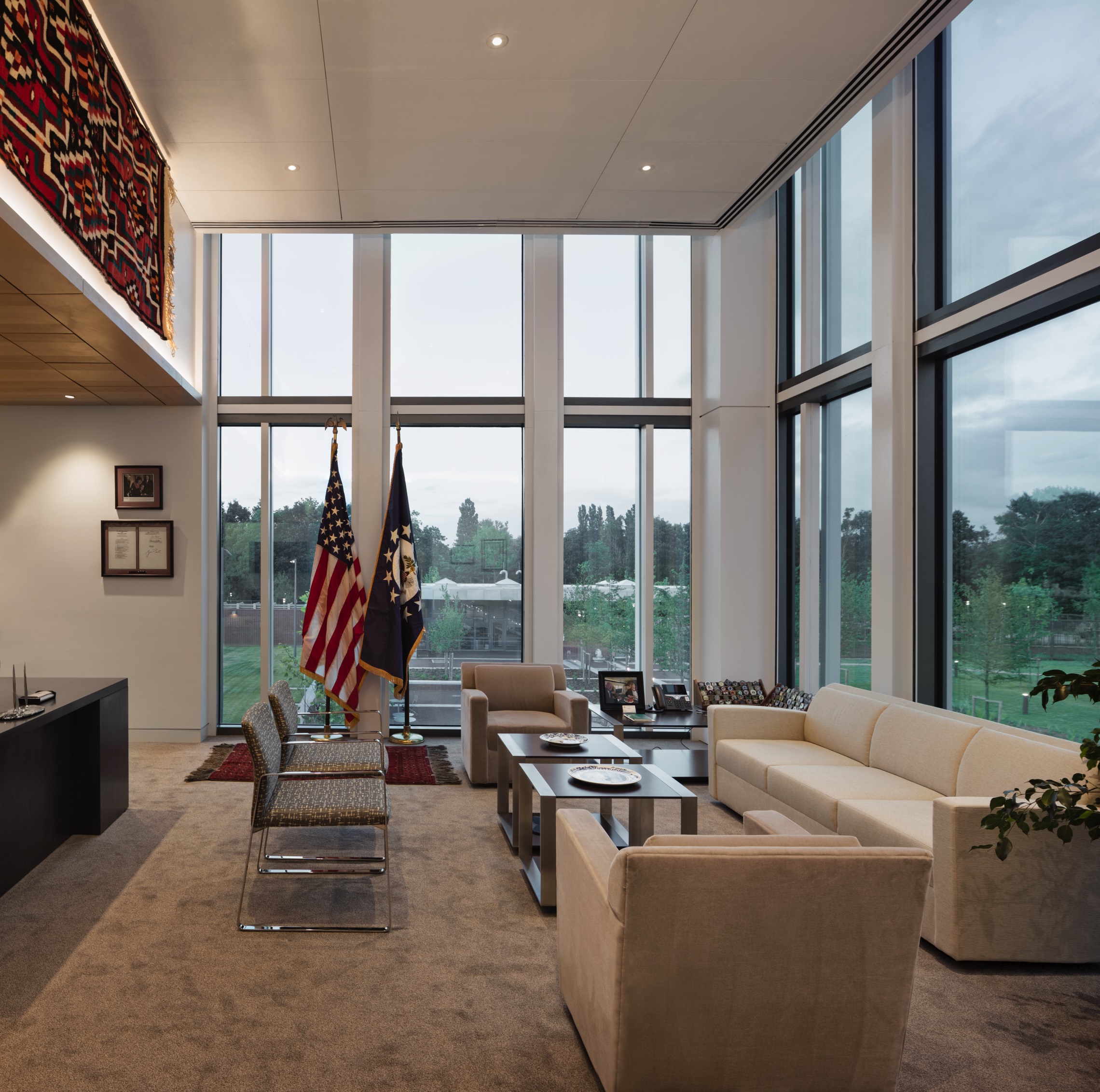The new U.S. Embassy campus is situated on a 10-acre site in the municipality of Wassenaar and will include a chancery office building, a U.S. Marine Corps residence, a utility building, and multiple access pavilions.
The new Embassy campus provides a secure, modern, and environmentally sustainable platform for diplomacy in The Hague.
Design
The buildings, while American in character, reflect sensibilities that are Dutch. The most important aspect of this is the use of brick for the building façades, which is prolifically used as a façade material in the Netherlands.
Other buildings on the campus, including utility buildings, will be clad in brick to provide uniformity to the campus. The use of brick is not limited to the building facades, but extends to other site elements such as bridges, and even the pavers of the walkways throughout the campus.
 The Chancery façade also includes the use of white granite at the entrance. This design concept pays homage to important Dutch buildings, which also display this convention.
The Chancery façade also includes the use of white granite at the entrance. This design concept pays homage to important Dutch buildings, which also display this convention.
The Chancery interior is featured by the use of wood veneer and blue glass. Although the facility will not provide Consular services, which are located in Amsterdam, a large multi-purpose space will welcome visitors and is situated with the most advantageous views of the landscape.
Landscape
The new campus grounds respect the Dutch landscape of water, scrub, and field. The prevailing landscape of Wassenaar includes extensive use of waterways, including canals both small and large, and ponds. The new campus includes a newly designed pond, and other drainage canals that blend with this landscape while providing functional and ecological benefits.
 The landscape also includes plantings and trees that are typically found in the Netherlands, and selected for resiliency in their location.
The landscape also includes plantings and trees that are typically found in the Netherlands, and selected for resiliency in their location.
The campus envelope features a green zone along the road that balances both openness and security, allowing viewers to catch glimpses of the buildings as one passes while conforming with the Department's security requirements.
Sustainability
The building is registered with the U.S. Green Building Council and is targeting Leadership in Energy and Environmental Design (LEED®) Silver certification. The site has a high water table, as well as an abundance of rainfall. To take advantage of this abundance, the embassy cleans the rainwater before it enters the country-wide canal system.
The embassy is projected to reduce energy costs by 30% compared against a conventional building. This saving is accomplished through the use of ground source heat pumps for both heating and cooling; lightemitting diode (LED) site lighting; electric traction elevators; and variable frequency drives from pumps, fans, and motors.
Art
The permanent art collection, curated by the Office of Art in Embassies (AIE), features works by contemporary American, Dutch-American and Dutch artists for both the interior and exterior spaces. The works encompasses a variety of styles and media, and include site-specific commissions.

The collection forges a dynamic cross-cultural exchange around shared themes and celebrate the lasting friendship between the United States and The Netherlands.